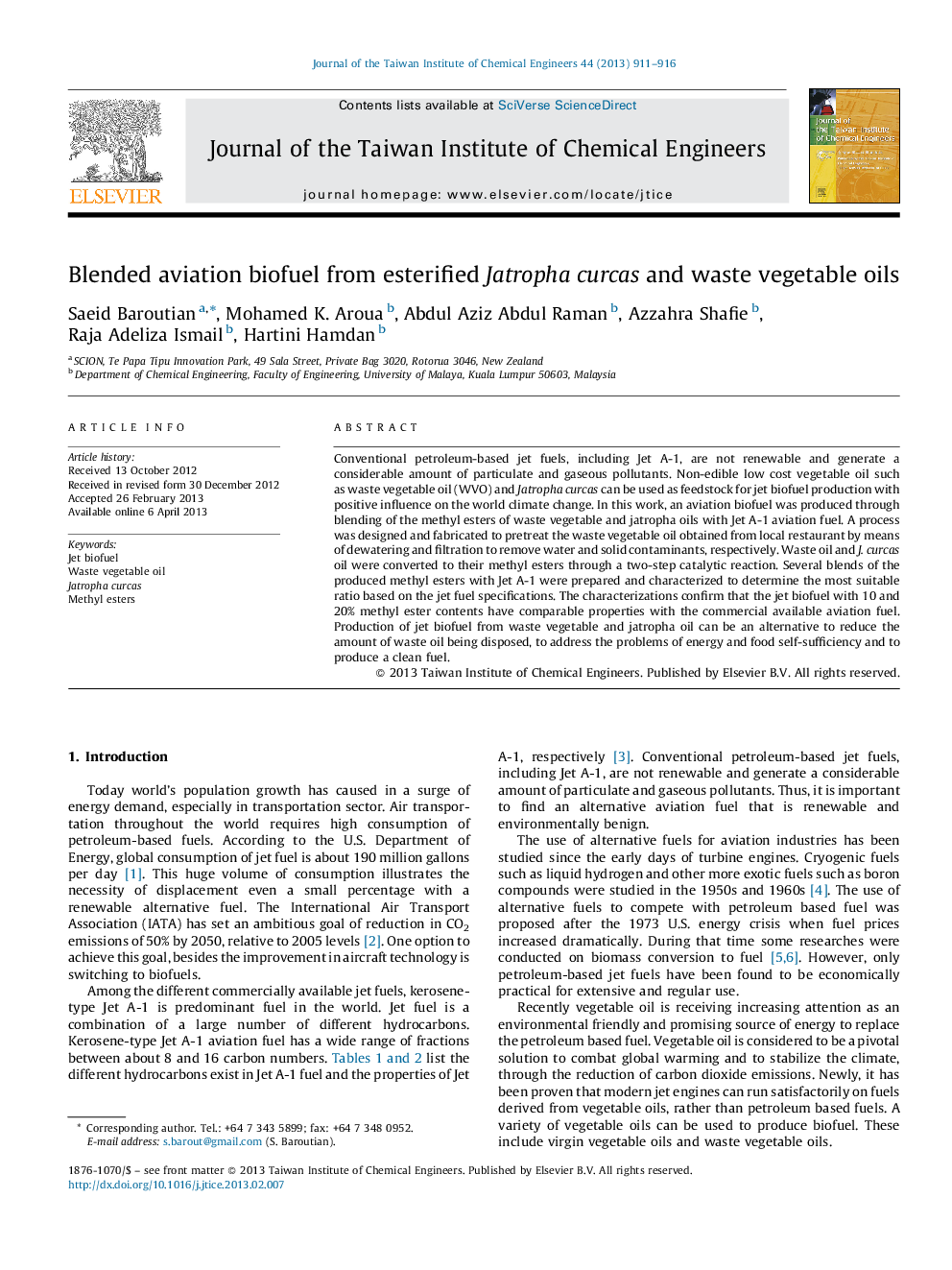| کد مقاله | کد نشریه | سال انتشار | مقاله انگلیسی | نسخه تمام متن |
|---|---|---|---|---|
| 691041 | 1460435 | 2013 | 6 صفحه PDF | دانلود رایگان |

• In this work, an aviation biofuel was produced through blending of methyl esters of waste vegetable and jatropha oils with Jet A-1 aviation fuel.
• Several blends of the produced methyl esters with Jet A-1 were prepared and characterized.
• The comparison indicated that the jet bio fuel with 10 and 20% ester contents have similar characteristics with the commercial available Jet A-1 aviation fuel.
Conventional petroleum-based jet fuels, including Jet A-1, are not renewable and generate a considerable amount of particulate and gaseous pollutants. Non-edible low cost vegetable oil such as waste vegetable oil (WVO) and Jatropha curcas can be used as feedstock for jet biofuel production with positive influence on the world climate change. In this work, an aviation biofuel was produced through blending of the methyl esters of waste vegetable and jatropha oils with Jet A-1 aviation fuel. A process was designed and fabricated to pretreat the waste vegetable oil obtained from local restaurant by means of dewatering and filtration to remove water and solid contaminants, respectively. Waste oil and J. curcas oil were converted to their methyl esters through a two-step catalytic reaction. Several blends of the produced methyl esters with Jet A-1 were prepared and characterized to determine the most suitable ratio based on the jet fuel specifications. The characterizations confirm that the jet biofuel with 10 and 20% methyl ester contents have comparable properties with the commercial available aviation fuel. Production of jet biofuel from waste vegetable and jatropha oil can be an alternative to reduce the amount of waste oil being disposed, to address the problems of energy and food self-sufficiency and to produce a clean fuel.
Journal: Journal of the Taiwan Institute of Chemical Engineers - Volume 44, Issue 6, November 2013, Pages 911–916